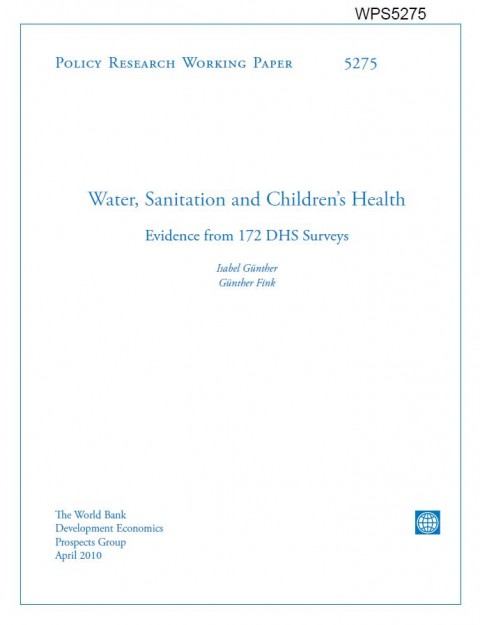Water, Sanitation and Children’s Health - Evidence from 172 DHS Surveys
Günther, I., Fink, G. (2010)

Published in: 2010
Publisher:
World Bank
Author:
Günther, I., Fink, G.
Uploaded by:
SuSanA secretariat
Partner profile:
common upload
3917 Views
7 Downloads
Content - Summary
This paper combines 172 Demography and Health Survey data sets from 70 countries to estimate the effect of water and sanitation on child mortality and morbidity. The results show a robust association between access to water and sanitation technologies and both child morbidity and child mortality. The point estimates imply, depending on the technology level and the sub-region chosen, that water and sanitation infrastructure lowers the odds of children to suffering from diarrhea by 7–17 percent, and reduces the mortality risk for children under the age of five by about 5-20 percent. The effects seem largest for modern sanitation technologies and least significant for basic water supply. The authors also find evidence for the Mills-Reincke Multiplier for both water and sanitation access as well as positive health externalities for sanitation investments. The overall magnitude of the estimated effects appears smaller than coefficients reported in meta-studies based on randomized field trials, suggesting limits to the scalability and sustainability of the health benefits associated with water and sanitation interventions.
Additional information
Policy Research Working Paper 5275
Bibliographic information
Günther, I., Fink, G. (2010). Water, Sanitation and Children’s Health - Evidence from 172 DHS Surveys. World Bank
Filter tags
English














